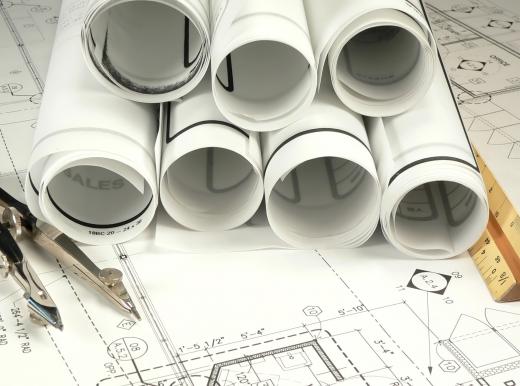What Are Design Factors?
 Mary McMahon
Mary McMahon
Design factors are considerations that must be met when a system or structure is designed to ensure it will satisfy the working requirements. For example, an engineer designing a bridge might need it to be able to carry 1,000 cars per hour. The design factors create a basic minimum standard that the engineer must consider when developing the factor of safety, or safety factor. This involves the maximum strain a system can take before it fails and should always be higher than the design factor to prevent problems.
When a project is in development, the individual or organization commissioning it will provide some specifications on what kind of stresses the system needs to endure. These can include environmental factors like extreme heat or cold, physical stress in the form of weight and moving objects, and so forth. For structures, seismic factors must be incorporated, while something like a piece of equipment needs to be able to handle a set number of operations per hour.

The engineer uses this information to establish the design factors. These represent the tolerances the project has to meet in order to satisfy the needs of the owner. Next, the engineer considers an appropriate safety factor to create a margin for error. The engineer might decide that the finished project should be able to endure 10 times the projected strain, for instance. This ensures that it will continue to function in high stress situations.

In addition to considering physical limitations on a project, engineers may also consider other topics like environmental and social impacts. These can be an important part of the design factors and may make the difference between a sustainable project and a failure. For instance, in designing a high speed train, engineers need to think about noise abatement to limit noise pollution and keep neighboring communities happy with the train. Likewise, engineers might think about the sources for raw materials on a project to determine whether it is possible to obtain them in a more environmentally friendly way.

Engineers typically discuss the design and safety factors in the technical specifications for a project. This information is spelled out to make sure everyone involved is familiar with the limits and requirements. In addition, if something goes wrong, it can be important to determine how and why engineers calculated the design factors. This will show whether the problem was a genuine unforeseen issue, or the result of a mistake on the part of the design team.
AS FEATURED ON:
AS FEATURED ON:














Discuss this Article
Post your comments